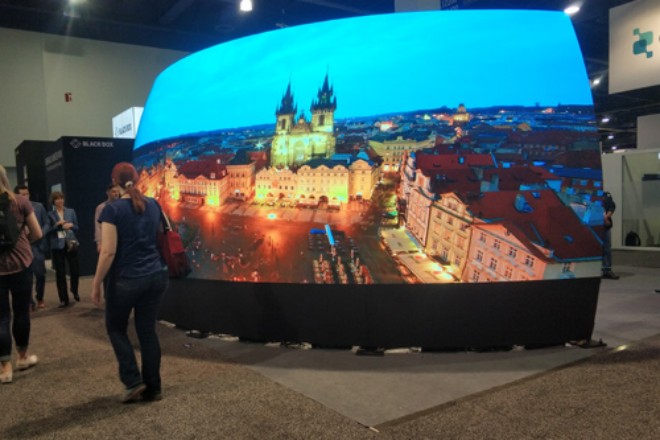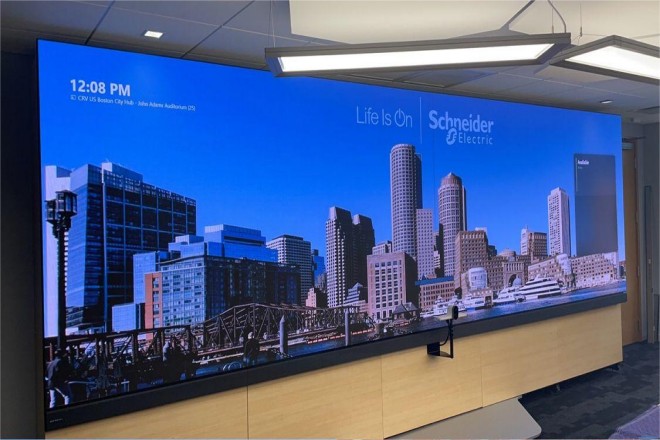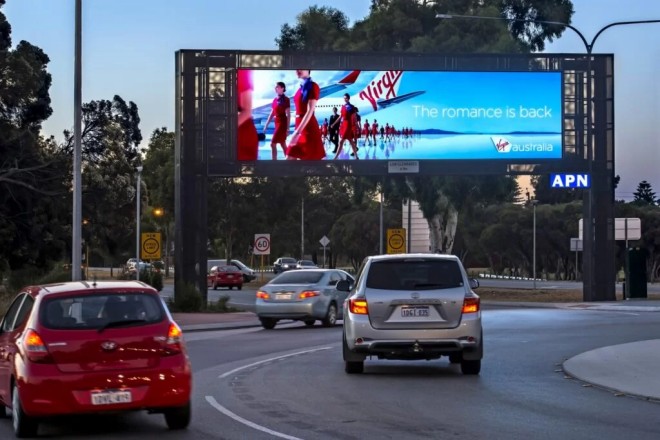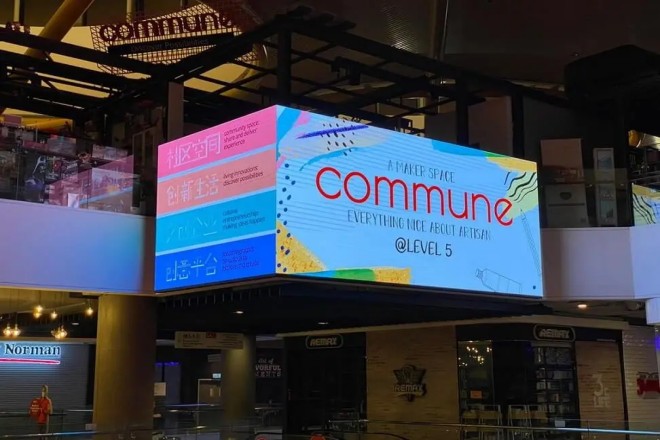Introduction

In the digital age, LED displays have become a powerful tool for delivering information and attracting attention. However, faced with the dazzling array of Afficheurs LED on the market, many consumers and businesses with limited budgets may feel overwhelmed.
How to choose an LED display screen with superior performance and reasonable price within a limited budget has become an urgent problem to be solved. This article will provide you with a carefully compiled guide to help you still be able to purchase a cost-effective and satisfactory LED display screen under a tight budget.
1. Clearly define your own purchasing needs
1). Determine the purpose of the LED display screen
1.1). Commercial advertising:
Store promotion, brand display, etc., enhance brand image and attract customers.
It is necessary to consider larger size, high luminosité, high contrast and good color performance to ensure that the content can be clearly displayed under various lighting conditions.
1.2). Event rental:
For temporary events such as concerts, exhibitions, conferences, etc., to provide flexible visual display solutions.
A portable, easy to install, disassemble and transport display screen is required, as well as sufficient brightness and clarity to cope with the needs of outdoor or different light environments.
2). Determine the size, resolution, and brightness requirements of the display according to the usage scenario and expected audience
2.1). Size:
Commercial advertising: Choose according to the size of the store, wall size, and display content, such as 1m×2m, 2m×3m, etc., to ensure that the content can be fully displayed and attract customers’ attention.
Event rental: Choose according to the size of the event venue and the distance of the audience. A larger display may be required to cover a wider audience and enhance the visual impact.
2.2). Résolution:
Commercial advertising: Details such as text and images need to be clearly displayed, so a higher resolution display should be selected to ensure the clarity and readability of the content.
Event rental: Although the audience is far away, the resolution still needs to be moderate to ensure the overall clarity and visual effect of the content.
2.3). Luminosité:
Commercial advertising: Choose according to the store light and display needs. A high-brightness display may be required to cope with strong light environments to ensure that the content can be clearly seen during the day or at night.
Event rental: Outdoor use or indoor environments with strong light require a higher brightness display to ensure that the content remains clear and readable under various light conditions.
2. Choose the type of LED display you need

After clarifying the purpose, size, resolution, and brightness requirements of the LED display, you need to distinguish between indoor and outdoor models, consider waterproof and dustproof features, and choose new or second-hand displays based on the installation environment and budget.
1). Distinguish between indoor and outdoor models
- Indoor models:
Mainly used in indoor environments, such as commercial stores, conference rooms, etc.
It is usually not necessary to have waterproof and dustproof features, so the design is thinner and lighter, suitable for hanging on the wall or embedded in the ceiling.
The resolution and color performance are more delicate and suitable for close viewing.
- Outdoor models:
Mainly used in outdoor environments, such as billboards, event sites, etc.
It must have waterproof and dustproof features to cope with bad weather and dust pollution.
Higher brightness to cope with direct sunlight and light reflection to ensure that the content is clearly visible.
2). Consider waterproof and dustproof features
For LED displays used outdoors, the waterproof and dustproof level (usually expressed as IP level) is a very important consideration. The higher the IP level, the better the waterproof and dustproof performance of the display.
Waterproof ratings usually range from IP65 to IP68, where IP65 means that water can be prevented from entering the display from any direction, while IP68 means that the display can be used underwater for a long time without damage at a certain depth.
Dustproof ratings range from IP5X to IP6X, where IP6X means that the inside of the display is completely unaffected by dust.
3). Choose new or second-hand displays based on the installation environment and budget
3.1). New display:
Advantages: Stable performance, reliable quality, and perfect after-sales service.
Applicable scenarios: Places with high requirements for display effects, reliability, and after-sales service, such as high-end commercial stores, important event sites, etc.
Budget considerations: The price of new displays is relatively high, but in the long run, its stability and reliability may reduce the cost of repairs and replacements.
3.2). Second-hand displays:
Advantages: relatively low prices, suitable for places with limited budgets.
Applicable scenarios: places with low requirements for display effects and reliability, such as temporary events, small commercial stores, etc.
Budget considerations: Although second-hand displays are cheaper, there may be certain signs of use and potential failure risks, and their performance and reliability need to be carefully evaluated.
3. Selection of the pixel pitch (P value) of the LED display
Le pas de pixel (P value) of the LED display is a key consideration in the purchase process, which is directly related to the visual effect and cost-effectiveness of the display.
The following is how to choose the most suitable pixel pitch based on viewing distance and budget, as well as the approximate price trend of different P value displays on the market.
1). Determine the P value based on viewing distance and budget
1.1). Distance de visualisation :
Short distance: If the audience is close to the display, such as in conference rooms, retail stores, and other environments, it is recommended to choose a display with a smaller pixel pitch, such as P4 or P5, to ensure that the details of the content are clearly discernible.
Long distance: For application scenarios where the audience is far away, such as outdoor billboards and large-scale event sites, a display with a slightly larger pixel pitch, such as P8 or P10, can be selected to ensure a certain visual effect while controlling costs.
1.2). Considérations budgétaires :
Displays with smaller pixel pitches usually mean higher technical requirements and manufacturing costs, so the price is relatively high. On the premise of meeting visual needs, the P value should be reasonably selected according to the budget to seek the best cost-effective solution.
The prices of display screens with different P values on the market vary significantly, and specific factors need to be comprehensively evaluated in combination with brand, quality, after-sales service, and other factors.
2). Price trends of different P-value displays on the market
Indoor LED screens with pixel pitches of P2.5 to P6 are usually more expensive and are suitable for occasions with extremely high requirements for display effects.
Outdoor LED screens with pixel pitches of P5 to P10 are relatively affordable and suitable for a wide range of application scenarios, such as outdoor advertising and event rental.
- Special types of LED screens:
For example, for transparent LED screens, écrans LED flexibles, etc., due to their unique structure and performance, the prices are usually at the high end of the market and are suitable for specific creative display needs.
It is worth noting that due to market fluctuations, changes in raw material costs and adjustments in supplier strategies, the above price trends are for reference only.
When actually purchasing, it is recommended to communicate with multiple suppliers to obtain the latest quotes and discount information in order to make a more informed choice.
4. Budget and cost-effectiveness analysis

1). Clarify the budget and consider the cost comprehensively
When we want to buy an LED display, we first need to set a reasonable budget. But please note that this budget is not just the purchase price of the display, but also needs to cover the cost of its operation and maintenance.
Purchase cost: This includes the cost of the display itself, which will vary depending on factors such as size, resolution, pixel pitch, etc. Generally speaking, the larger the size, the higher the resolution, and the smaller the pixel pitch, the higher the price.
Operation cost: The display consumes electricity during operation, so we need to consider its energy consumption cost. High brightness and long-term use will increase energy consumption, thereby increasing operating costs.
Maintenance cost: LED display screens require regular maintenance and care, including cleaning, checking whether the lamp beads are damaged, etc. Although this part of the cost is relatively low, it also needs to be included in the budget.
2). Recommended cost-effective LED display screens
2.1). Budget planning: comprehensive consideration, precise positioning
Before embarking on the journey of purchasing LED display screens, accurate budget planning is a crucial step. This not only means that you have to reserve enough funds for the initial purchase of the display screen, but also consider its long-term operation and maintenance costs to ensure the long-term benefits of the investment.
- Initial purchase cost:
This is the most direct cost, including the hardware cost of the display screen. The size, resolution, pixel pitch, brightness, and other parameters of the display screen will directly affect its price.
For example, a display screen with high resolution and small pixel pitch can provide a more sophisticated display effect, but the price is also relatively high.
- Operating energy cost:
LED display screens consume a lot of electricity when running, especially when working at high brightness and for a long time. Therefore, when planning the budget, this part of the energy cost must be taken into account, and products with high energy efficiency ratio should be selected to reduce long-term operating costs.
- Maintenance and service costs:
Although this part of the cost is relatively fixed and low, it should not be ignored. Including regular cleaning and maintenance, replacement of damaged LED lamp beads, and possible repair services, etc., are all necessary expenses to maintain the normal operation of the display screen.
2.2). Cost-effective choice: quality and price are equally important
Among the many LED display products, how to select cost-effective products is a concern for every buyer. The following are some highly praised and cost-effective LED display screens on the market:
2.2.1). Indoor high-definition LED display screens (such as P2.5):
Highlights: High resolution brings delicate and clear display effects, which are suitable for close viewing, such as indoor environments, such as conference rooms and exhibition halls.
Cost-effectiveness analysis: Although the price is relatively high, the excellent display effect and stability make it worth the money, especially suitable for occasions with extremely high requirements for display effects.
2.2.2). Outdoor waterproof LED display (such as P4):
Highlights: It has excellent waterproof, dustproof, and sunproof performance and is suitable for various harsh outdoor environments, such as billboards, event sites, etc.
Cost-effectiveness analysis: With moderate price and stable performance, it is an ideal choice for outdoor display applications. Its high brightness design ensures clear display even under direct sunlight.
2.2.3). LED display for rental and events (such as P6):
Highlights: Lightweight and easy to install and disassemble, it is very suitable for the rental market and temporary events. High refresh rate and low latency ensure the smoothness of dynamic images.
Cost-effectiveness analysis: The price is relatively low, but the performance fully meets the needs of rental and event displays, and it is the first choice for rental companies and event planners.
2.3). All-round consideration: details determine success or failure
When purchasing LED display screens, in addition to budget and cost-effectiveness, there are many other factors that need to be considered comprehensively:
Effet d'affichage :
In addition to resolution and pixel pitch, parameters such as screen brightness, contrast, color saturation, etc., should also be considered to ensure that the display effect meets actual needs.
Stability and durability:
Choose products from well-known brands and high-quality suppliers to ensure the stability and durability of the display. This not only reduces the failure rate but also reduces long-term maintenance costs.
Service après-vente:
High-quality after-sales service is an important part of purchasing LED display screens. Good after-sales service can ensure that problems with the display screen are solved promptly and effectively.
Scénario d'application :
Choose the appropriate type of display screen according to the actual application scenario.
For example, indoor environments need to choose a display screen with moderate brightness and bright colors, while outdoor environments need to choose a display screen with excellent waterproof, dustproof, and sun protection performance.
5. Consider renting or buying an LED display screen
When you want to use an LED display screen for display, activities, or daily work, you may be entangled: Is it better to buy one directly or rent one? In fact, this mainly depends on your usage needs and budget.
1). The benefits of buying an LED display screen:
Long-term ownership: Once purchased, the display screen is yours and can be used for a long time.
Cost sharing: Although it costs a lot of money at the beginning, in the long run, the cost of each use is low because the cost has been shared into the purchase expenditure.
High degree of freedom: You can adjust the settings of the display screen at any time according to your needs without being restricted by the rental period.
2). Benefits of renting an LED display:
Low initial investment: If you rent, you don’t have to spend too much money at the beginning; you only need to pay the rent and make a possible deposit.
Good flexibility: If you only need it for a short period of time, or are not sure whether you will need it in the future, renting is more suitable. You can adjust the lease term at any time according to actual needs.
Fast technology update: Rental companies usually provide the latest equipment, and you don’t have to worry about outdated technology.
3). How to choose:
If you need to use it for a long time and have a sufficient budget, it may be more cost-effective to buy a display.
If you only need it occasionally or have a limited budget, renting a display may be more suitable.
4). What should you pay attention to when renting an LED display?
When you decide to rent an LED display, there are several key points you have to remember to ensure that you can rent a satisfactory product.
- The display effect should be good:
Make sure the clarity, brightness, and color of the display meet your needs.
- The price should be reasonable:
The rent should be reasonable, not too expensive or too cheap (too cheap may have quality problems).
Ask if maintenance costs are included so that if there is a problem, someone can help you solve it.
- The brand reputation should be good:
Choose a well-known brand so that service quality and after-sales are guaranteed.
Check out other users’ reviews to understand the supplier’s true situation.
- The contract terms should be clear:
The lease term should be clear so as not to be overcharged.
The method of returning the deposit should also be clearly asked to avoid disputes.
If the display is damaged, the compensation terms should also be understood clearly.
In general, the key to buying or renting depends on your usage needs and budget. When renting, remember to pay attention to the display effect, price, brand reputation, and contract terms so that you can rent a satisfactory product.
6. Comparison and selection of LED display screens of different brands

In the LED display screen market, there are many brands and models. How to select cost-effective products from them has become the focus of many consumers. The following will provide some practical comparison skills and tips for identifying cost-effective display screens.
Choosing a well-known brand usually means higher product quality and more reliable after-sales service.
- Compare technical parameters:
Carefully compare the technical parameters of different brands and models, such as brightness, contrast, resolution, refresh rate, etc. These parameters directly affect the display effect and user experience of the display screen.
- Check user reviews:
Check other users’ reviews and feedback on the product through e-commerce platforms, social media, or industry forums. This helps to understand the actual use effect and potential problems of the product.
- Consider after-sales service:
High-quality after-sales service is a factor that cannot be ignored when choosing a product. Understand the supplier’s after-sales service policy, such as warranty period, repair response speed, etc., to ensure timely and effective support during use.
Conclusion
Choosing an LED display does not always require a huge investment.
By carefully analyzing your needs, comparing different options wisely, and considering long-term operating costs, it is entirely possible to find a suitable display on a limited budget.
Remember, investing in quality and performance rather than just price can save you more costs and trouble in the future.
Enfin, si vous souhaitez en savoir plus sur les écrans LED, veuillez nous contacter.
